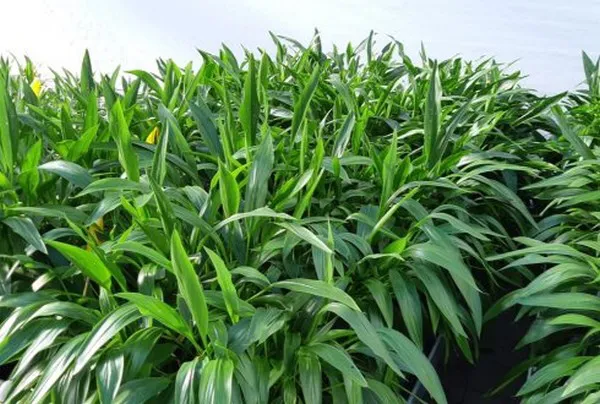With a clean start and a faster cultivation schedule, diseases probably have less chance in the cultivation of Zantedeschia. This means that less chemical crop protection agents are needed. The Greenhouse Horticulture and Flower Bulbs Business Unit of Wageningen University & Research is investigating with a consortium of companies whether it is possible to grow the tubers in a greenhouse for the first two years.

Cultivation system of the Zantedeschia
The professional cultivation of Zantedeschia takes four years. The first year starts with tissue culture; tubers grow from it, which are grown outside during the second year into large tubers. These in turn are 'chipped' and the small pieces grow into saleable size tubers in two years.
This cultivation system ensures that diseases and pests continue to circulate in the crop: especially if the tubers grow outside, there is a risk of virus infection. As a result, chemical crop protection agents are needed in the cultivation of Zantedeschia. To break this circle it is necessary to start with clean, disease-free material, keep them clean during cultivation and reduce their growth cycles.
Cleaner and faster cultivation
In the four-year project 'Fundamental system leap in flower bulbs', WUR is investigating the possibilities of a clean start and fast cultivation for a number of crops, including Zantedeschia. The possibility of growing in a greenhouse for the first two years is being considered. This way larger tubers are produced, so the last phase only needs to last one year in the open field. Cultivation will then only take three years.
More knowledge and insights
The new cultivation system entails more costs, because of the extra year of cultivation in the greenhouse. It is expected that those extra costs can probably be recouped through the shorter cultivation cycle. The research not only provides insights about the cultivation system, but also fundamental knowledge. Crop research into Zantedeschia has only been taking place for a relatively short time. While researching cultivation systems, researchers also learn more about tuber growth.
The research 'Fundamental system leap in flower bulbs' is a PPP and is funded by Top Sector Horticulture & Propagation Materials, KAVB, Anthos, Wageningen University & Research (WUR), Hobaho, Kapiteyn, Prins, Iribov, Dunamo Foundation, Agrifirm-GMN, BQ Support, Greenport Duin & Bollenstreek, Bollenacademie and Rabobank Nederland.
Source: www.wur.nl
